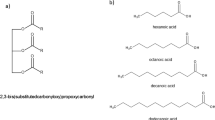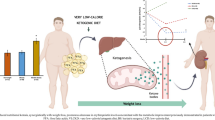Abstract
Fourteen healthy volunteers were randomly allocated to receive 4 g highly purified ethyl esters of eicosapentaenoic acid (EPA) (95% pure, n=7) or docosahexaenoic acid (DHA) (90% pure, n=7) daily for 5 wk in supplement to their ordinary diet. The n−3 fatty acids were given with a standard high-fat meal at the beginning and the end of the supplementation period. EPA and DHA induced a similar incorporation into chylomicrons which peaked 6 h after the meal. The relative uptake of EPA and DHA from the meal was >90% compared with the uptake of oleic acid. During absorption, there was no significant elongation or retroconversion of EPA or DHA in total chylomicron fatty acids. The concentration of EPA decreased by 13% and DHA by 62% (P<0.001) between 6 and 8 h after the meal. During the 5-wk supplementation period, EPA showed a more rapid and comprehensive increase in serum phospholipids than did DHA. DHA was retroconverted to EPA, whereas EPA was elongated to docosapentaenoic acid (DPA). The postprandial triglyceridemia was suppressed by 19 and 49% after prolonged intake of EPA and DHA, respectively, indicating that prolonged intake of DHA is equivalent to or even more efficient than that of EPA in lowering postprandial triglyceridemia. This study indicates that there are metabolic differences between EPA and DHA which may have implications for the use of n−3 fatty acids in preventive and clinical medicine.
Similar content being viewed by others
Abbreviations
- CM:
-
chylomicrons
- DHA:
-
docosahexaenoic acid
- DPA:
-
docosapentaenoic acid
- EE:
-
ethyl esters
- EPA:
-
ereosapentaenoic acid
- FA:
-
fatty acid
- HDL:
-
high density lipoproteins
- LA:
-
linoleic acid
References
Schmidt, E.B., and Dyerberg, J. (1994) Omega-3 Fatty Acids: Current Status in Cardiovascular Medicine, Drugs 47, 405–424.
Hansen, J.B., Lyngmo, V., Svensson, B., and Nordøy, A. (1993) Inhibition of Exercise-Induced Shortening of Bleeding Time by Fish Oil in Familial Hypercholesterolemia (Type lla), Arterioscler. Thromb. 13, 98–104.
Zilversmit, D.B. (1979) Atherogenesis: A Postprandial Phenomenon, Circulation 60, 473–485.
Barrit, D.W. (1956) Alimentary Lipaemia in Men with Coronary Artery Disease and in Controls, Br. Med. J. 2, 640–644.
Brown, D.F., Heslin, A.S., and Doyle, J.T. (1961) Postprandial Lipemia in Health and in Ischemic Heart Disease: A Comparison of Three Indexes of Fat Absorption and Removal and Their Modification by Systemic Heparin Administration, N. Engl. J. Med. 264, 733–737.
Patsch, J.R., Miesenböck, G., Hopferwieser, T., Mühlberger, V., Knapp, E., Dunn, J.K., Gotto, A.M. Jr., and Patsch, W. (1992) Relation of Triglyceride Metabolism and Coronary Artery Disease: Studies in the Postprandial State, Arterioscler. Thromb. 12, 1336–1345.
Weintraub, M.S., Zechner, R., Brown, A., Eisenberg, S., and Breslow, J.L. (1988) Dietary Polyunsaturated Fats of the n−6 and n−3 Series Reduce Postprandial Lipoprotein Levels, J. Clin. Invest. 82, 1884–1893.
Harris, W.S., Connor, W.E., Alam, N., and Illingworth, D.R. (1988) Reduction of Postprandial Triglyceridemia in Humans by Dietary n−3 Fatty Acids, J. Lipid. Res. 29, 1451–1460.
Harris, W.S., and Muzio, F. (1993) Fish Oil Reduces Postprandial Triglyceride Concentrations Without Accelerating Lipid-Emulsion Removal Rates, Am. J. Clin. Nutr. 58, 68–74.
Willumsen, N., Hexeberg, S., Skorve, J., Lundquist, M., and Berge, R.K. (1993) Docosahexaenoic Acid Shows No Triglyceride-Lowering Effects But Increases the Peroxisomal Fatty Oxidation in Liver of Rats, J. Lipid. Res. 34, 13–22.
Grimsgaard, S., Bønaa, K.H., Hansen, J.B., and Nordøy, A. (1997) Highly Purified Eicosapentaenoic Acid and Docosa-hexaenoic Acid in Humans Have Similar Triacylglycerol Lowering Effects, But Divergent Effects on Plasma Fatty Acids, Am. J. Clin. Nutr. 66, 649–659.
Bønaa, K.H., Bjerve, K.S., and Nordøy, A. (1992) Docosahexaenoic and Eicosapentaenoic Acids in Plasma Phospholipids Are Divergently Associated with High Density Lipoprotein in Humans, Arterioscler. Thromb. 12, 675–681.
El Boustani, S., Coletta, C., Monnier, L., Descomps, B., Crastes de Paulet, A., and Mendy, F. (1987) Enteral Absorption in Man of Eicosapentaenoic Acid in Different Chemical Forms, Lipids 22, 711–714.
Lawson, L.D., and Hughes, B.G. (1988) Human Absorption of Fish Oil Fatty Acids as Triglycerides, Free Acids or Ethyl Esters, Biochem. Biophys. Res. Commun. 152, 328–335.
Nordøy, A., Barstad, L., Connor, W.E., And Hatcher, L. (1991) Absorption of the n−3 Eicosapentaenoic and Docosahexaenoic Acids as Ethyl Esters and Triglycerides by Humans, Am. J. Clin. Nutr. 53, 1185–1190.
Hansen, J.B., Olsen, J.O., Wilsgård, L., Lyngmo, V., and Svensson, B. (1993) Comparative Effects of Prolonged Intake of Highly Purified Fish Oils as Ethyl Ester or Triglyceride on Lipids, Haemostasis and Platelet Function in Normolipemic Men, Eur. J. Clin. Nutr. 47, 497–507.
Krokan, H.E., Bjerve, K.S., and Mørk, E. (1993) The Enteral Bioavailability of Eicosapentaenoic and Docosahexaenoic Acid Is as Good as from Ethyl Esters as from Glyceryl Esters in Spite of Lower Hydrolytic Rates by Pancreatic Lipase in vitro, Biochim. Biophys. Acta. 1168, 59–67.
Aviram, M., Brox, J., and Nordøy, A. (1986) Effects of Postprandial Plasma and Chylomicrons on Endothelial Cells, Acta. Med. Scand. 219, 341–348.
Folch, J., Lees M., and Stanley, S. (1957) A Simple Method for the Isolation and Purification of Total Lipids from Animal Tissue, J. Biol. Chem. 226, 497–509.
Kaluzny, M.A., Duncan, L.A., Merritt, M.V., and Epps, D.E. (1985) Rapid Separation of Lipid Classes in High Yield and Purity Using Bonded Phase Columns, J. Lipid. Res. 26, 135–140.
Sas Institute, Inc: SAS/STAT guide for personal computers, version 6. Edn. Cary NC, SAS Institute 1987/1990.
Heimermann, W.R., Hohman, R.T., Gordon, D.T., Korvalyskyn, D.E., and Jensen, R.G. (1973) Effect of Double Bond Position in Octadecenoates upon Hydrolysis of Pancreatic Lipase, Lipids 8, 45–47.
Yang, L.Y., Kukis, A., and Myker, J.J. (1990) Lipolysis of Menhaden Oil Triacyl Glycerols in vitro: A Reexamination, J. Lipid. Res. 31, 137–147.
Neuringer, M., Anderson, G.J., and Connor, W.E. (1988) The Essentiality of n−3 Fatty Acids for the Development and Function of the Retina and Brain, Annu. Rev. Nutr. 8, 517–541.
Anderson, G.J., Tso, P.S., and Connor, W.E. (1994) Incorporation of Chylomicron Fatty Acids into the Developing Rat Brain, J. Clin. Invest. 93, 2764–2767.
Terano, T., Hirai, A., Hamazaki, T., Kobayashi, S., Fujita, T., Tamura, Y., and Kumagai, A. (1983) Effect of Oral Administration of Highly Purified Eicosapentaenoic Acid on Platelet Function, Blood Viscosity, and Red Cell Deformability in Healthy Human Subjects, Atherosclerosis 46, 321–331.
von Schacky, C., and Weber, P.C. (1985) Metabolism and Effects on Platelet Function of the Purified Eicosapentaenoic and Docosahexaenoic Acids in Humans, J. Clin. Invest. 76, 2446–2450.
Schlenk, H., Sand, D.M., and Gellerman, J.L. (1969) Retroconversion of Docosahexaenoic Acid in the Rat, Biochim. Biophys. Acta. 187, 201–207.
Stoffel, W., Ecker, W., Assad, H., and Sprecher, H. (1970) Enzymatic Studies on the Mechanism of the Retroconversion of C22-Polyenoic Fatty Acids to Their C20 Homologues, Z. Physiol. Chem. 351, 1545–1554.
Connor, W.E., DeFrancesco, C.A., and Connor, S.L. (1993) n-3 Fatty Acids from Fish Oil. Effects on Plasma Lipoproteins and Hypertriglyceridemic Patients, Ann. NY. Acad. Sci. 683, 16–34.
Ranheim, T., Gedde-Dahl, A., Rustan, A.C., and Drevon, C.A. (1992) Influence of Eicosapentaenoic Acid (20:5n−3) on Secretion of Lipoproteins in CaCo-2 Cells, J. Lipid. Res. 33, 1281–1293.
Rustan, A.C., Nossen, J.O., Christiansen, E.N., and Drevon, C.A. (1988) Eicosapentaenoic Acid Reduces Hepatic Synthesis and Secretion of Triacylglycerol by Decreasing the Activity of Acyl-Coenzyme A:1,2-Diacylglycerol Acyltransferase, J. Lipid Res. 29, 1417–1426.
Lang, C.A., and Davis, R.A. (1990) Fish Oil Fatty Acids Impair VLDL Assembly and/or Secretion by Cultured Rat Hepatocytes, J. Lipid. Res. 31, 2079–2086.
Wong, S.H., Nestel, P.J., Trimble, R.P., Storer, G.B., Illman, R.J., and Topping, D.L. (1984) The Adaptive Effects of Dietary Fish and Safflower Oil on Lipid and Lipoprotein Metabolism in Perfused Rat Liver, Biochim. Biophys. Acta. 792, 103–109.
Wong, S., Fisher, E.A., and Marsh, J.B. (1989) Effects of Eicosapentaenoic and Docosahexaenoic Acids on Apoprotein B mRNA and Secretion of Very Low Density Lipoproteins in HepG2 Cells, Arteriosclerosis 9, 836–841.
Martin, L.J., Reaidi, G.B., Gavino, G.R., and Gavino, V.C. (1991) Effect of 4, 7, 10, 13, 16, 19-Docosahexaenoic Acid on Triglyceride Accumulation and Secretion in Rat Hepatocytes in Culture, Lipids 26, 374–380.
Simons, L.A., Dwyer, T., Simons, J., Bernstein, L., Mock, P., Poonia, N.S., Balasubramaniam, S., Baron, D., Branson, J., Morgan, J., and Roy, P. (1987) Chylomicrons and Chylomicron Remnants in Coronary Artery Disease: A Case-Control Study, Atherosclerosis 65, 181–189.
Author information
Authors and Affiliations
Corresponding author
About this article
Cite this article
Hansen, JB., Grimsgaard, S., Nilsen, H. et al. Effects of highly purified eicosapentaenoic acid and docosahexaenoic acid on fatty acid absorption, incorporation into serum phospholipids and postprandial triglyceridemia. Lipids 33, 131–138 (1998). https://doi.org/10.1007/s11745-998-0188-8
Received:
Revised:
Accepted:
Issue Date:
DOI: https://doi.org/10.1007/s11745-998-0188-8




